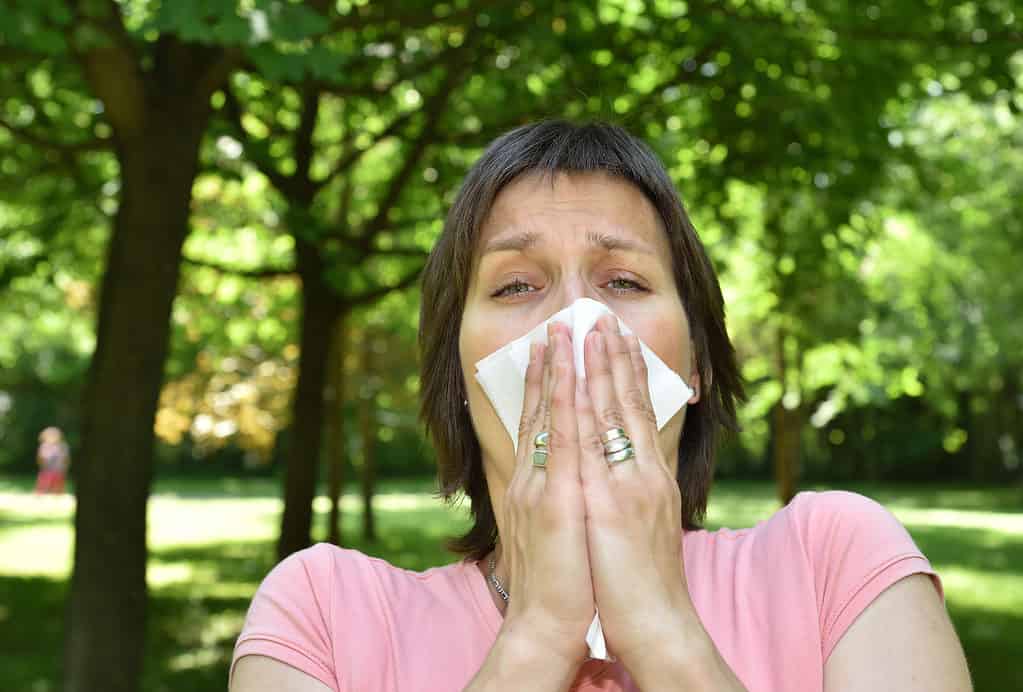Located in the upper Midwest, Minnesota shares borders with Canada and Lake Superior, the largest of the five Great Lakes that form the United States. The weather in Minnesota is also pleasant for people who suffer from allergies. Although it’s better than most others, it doesn’t even crack the top ten states for people with allergies.
Yet, this does not imply that Minnesota is pollen-free. Grass, weeds, and trees will still trigger allergic reactions in many locals every spring and fall. Anyone living in Minnesota who is afflicted with allergies will find this material helpful.
Those of you who live in Minnesota and suffer from allergies, you may find the following information and suggestions helpful. Don’t put off seeing a doctor about your allergies in Minnesota any longer than necessary.
When Is Allergy Season In Minnesota?
The allergy season in Minnesota is about the same length as the average, if not a bit shorter than the average for the rest of the country.
Peak Timing
Despite its northern latitude, Minnesota rarely sees warm weather for very long. This means that allergy season doesn’t start until April. If Minnesota experiences its first significant winter frost in October, allergy season will be over.
Which Plants Cause Allergies In Minnesota?

Ragweed is a common allergy trigger during the fall in Minnesota.
©iStock.com/Silviu Carol Cenusa
Allergy sufferers in Minnesota can expect a wide variety of symptoms throughout the year. Let’s have a look at the various seasons and the corresponding allergy symptoms.
Spring
Tree pollens in Minnesota are high from April to June. Birch, Oak, and Mulberry are some of the most triggering.
Summer
The grass allergy season in Minnesota peaks in the summer. Kentucky bluegrass, ryegrass, bent, timothy, orchard, and fescue are the usual suspects. Grass pollen allergies typically flare up in May and subside by July.
Fall
Minnesotans who suffer from weed allergies may experience symptoms during the fall. Among the worst offenders are ragweed, wormwood, amaranth, and sagebrush. The allergy season caused by weeds often begins in August and lasts until the first hard freeze of the winter.
Winter
The Minnesota winters are notoriously lengthy and bitter. This is fantastic news for people who suffer from seasonal allergies, but it could be disappointing for sun worshippers. Indoor allergens like dust mites, mold, and pet dander should be considered carefully.
Common Allergy Symptoms

Sneezing is one of the most common allergy symptoms.
©iStock.com/zdravinjo
The following are some of the most frequently reported allergy symptoms in Minnesota:
- Coughing
- Congestion
- Sneezing
- Headaches
- Sore throat
- Hives
- Drippy nose
- An increase in asthma symptoms
- Irritated, teary eyes
Allergies typically cause at least one of these symptoms, however, reactions might vary from person to person.
Best Allergy Treatments
Avoiding the allergen is the first line of defense against an allergic reaction. If you can avoid contact with the allergen, your allergy symptoms should improve. Nevertheless, with pollen floating through the air, it’s easier said than done. It’s still possible to handle the danger, but it needs to be reduced as much as possible.
Check the pollen levels. You should spend as much time as possible indoors if the pollen count is high.
Close the windows. If you or a family member suffers from allergies, closing the windows and turning on the air conditioner is the best option. The elimination of entry points for pollen is a major benefit.
Use a mask. A mask can prevent pollen from entering your lungs while you’re outside.
Reduce your time outside. Those who are severely allergic to pollen should spend as little time outside as possible when levels are high. But don’t deprive yourself of the pleasures that Mother Nature has to offer. Keep in mind that evenings typically have the lowest pollen concentrations.
Put in a High-Efficiency Particulate Air filter (HEPA). If you want to reduce the amount of pollen in your home, having a HEPA filter installed in your air conditioner is a good idea.
Regular bathing is encouraged. As you get back inside, hop in a steaming hot shower to wash the pollen out of your hair and skin.
Take the time to thoroughly clean the house. A HEPA filter vacuum, a dampened rag for dusting, and frequent laundry are all things that should be done during allergy season.
Take off your shoes inside. Shoes should be removed at the door to reduce the likelihood of bringing pollen inside the house.
Allergy Medications
Although avoiding precipitating events will assist, many individuals will still require extra treatment. When that happens, you can give over-the-counter allergy pills a shot. Medications like antihistamines, eye drops, decongestants, and nasal sprays are frequently used for temporary relief. In addition, several alternatives exist due to pressing medical requirements.
Talk To Your Doctor
Your doctor may give you medicine or suggest that you see an allergist or immunologist to help ease your symptoms. Some possible treatments for people with severe seasonal allergies are sublingual immunotherapy and allergy shots.
Click here to learn about all of the allergy seasons across the United States!
Up Next:
Thank you for reading! Have some feedback for us? Contact the AZ Animals editorial team.








